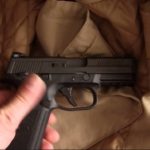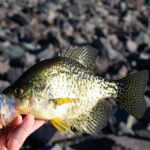Becoming a Better Hunter
Before you can become a better hunter you must understand the different pieces of the puzzle that make up a good hunter. There is a specific blue print that you must follow to truly construct yourself into a good hunter.
Hunting Can be broken up into several little pieces lets call them “The Hunting Essentials”
I am going to use Deer as our main subject because it is the most widely hunting big game animal in North America. Now this graph showing the core essentials is not listed in order of importance or in any order for that matter, what is important that you realize that there are many working parts to being a good hunter.
Scouting:
Scouting is by far the most important piece of the puzzle, because if you cannot find game nothing else matters. Scouting needs to be scientific and methodical for you to be consistently taking trophy sized game. 1st thing you must do is create a journal or purchase software to help you keep track of your scouting data, well not only keep track of it but make sense of it as well. In years passed I have developed certain spreadsheets etc. to help me keep track and utilize the info I collected. I have included these spreadsheets in The Whitetail Blue Print training program. But you can modify them to suet your needs. Once you have a journal you can begin your 4 phases of scouting. Let’s touch on them to give you a good overview:
- 1) Area selection
- Area Research
- Boot to The Ground
- Stand Site selection
Area selection, is where I begin my quest to locating big bucks. I start broad then I narrow it down as I go along meeting certain criteria . I begin by looking in what land is available to me to hunt public, private, WMA etc. I then take those areas and begin my first cut by taking the state harvest reports and seeing where the most deer are taken from for the last 5 years and correlating them to those areas available to me, I Then will look at the numbers of registered hunters in those areas and make another cut. I will then correlate the number of deer related car accidents in those areas. My next move is to look at the numbers of P & Y or B&C entries for the last few years in those areas as well.
Area Research: I then select 2-3 areas that meet my criteria I will then locate the wild life manager for those areas and give him a call to pick his brain (see www.thehuntingblueprint.com to find out what I ask) once I have heard what I have wanted to hear I then will obtain a Topo map and Ariel photo form www.thehuntingchannelonline.com where I will begin looking for landscape structures, water holes, feeding and bedding areas. I will map out several points on my map and log them in to my GPS
Boot to the Ground: Now that I’m armed with my maps and points I hit the field early in the morning so that I have the opportunity to observe game from a distance. Logging in all behaviors and patterns that I might observe. (It’s deciphering what usable info that’s the key to this portion of scouting and I can’t teach you that in just one article.) I then begin checking for sign, looking for obscure trails leading into bedding cover, scrapes, rubs, signs of feeding and droppings. Aging everything I come a crossed. I log in all my observations. Once I have all my data and have located the sign I’m looking for I began looking for my stand site.
Stand Selection: I do not chose a stand in one day nor do I accomplish the above in one outing either remember this is an abstract from the hunting blue print. Now that I clarified that once I have found trails or areas worthy of looking into further I put up my trail cams trying to cover as many areas and angles as possible to ensure I am armed with all the info I can obtain. I always use cameras that record time, date, moon, and temp it is important info to know. Because you need to be able to associate this info to the time of year you will be hunting that spot . Now that I have my photos I can make a decision as to what spot is the best, last thing I need to do is to choose a tree that will serve my needs best. Once I have done that I hang my stands up as early in the season as possible and create reason why deer would want to come to me. There a certain tricks etc that don’t require baiting to get more deer passed your stand which I discuss in another segment of The Whitetail Blueprint
If you would like to find out the secrets of what I look for when choosing and area, what landscape structure I look for on a map, how I can tell what’s bedding cover and or feeding areas on an aerial photo or how to age sign, what sign is important, what trails to pay attention to, how to judge scrapes and rubs, how to hang your trail cams, choose a tree and much more you need to get the Whitetail Blue Print .












Leave a Reply